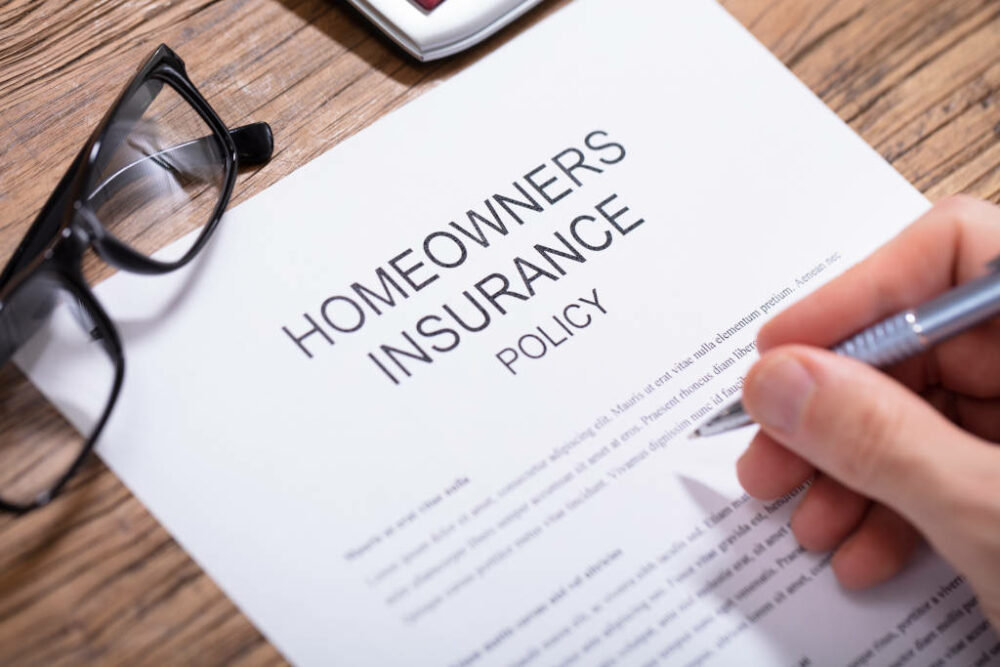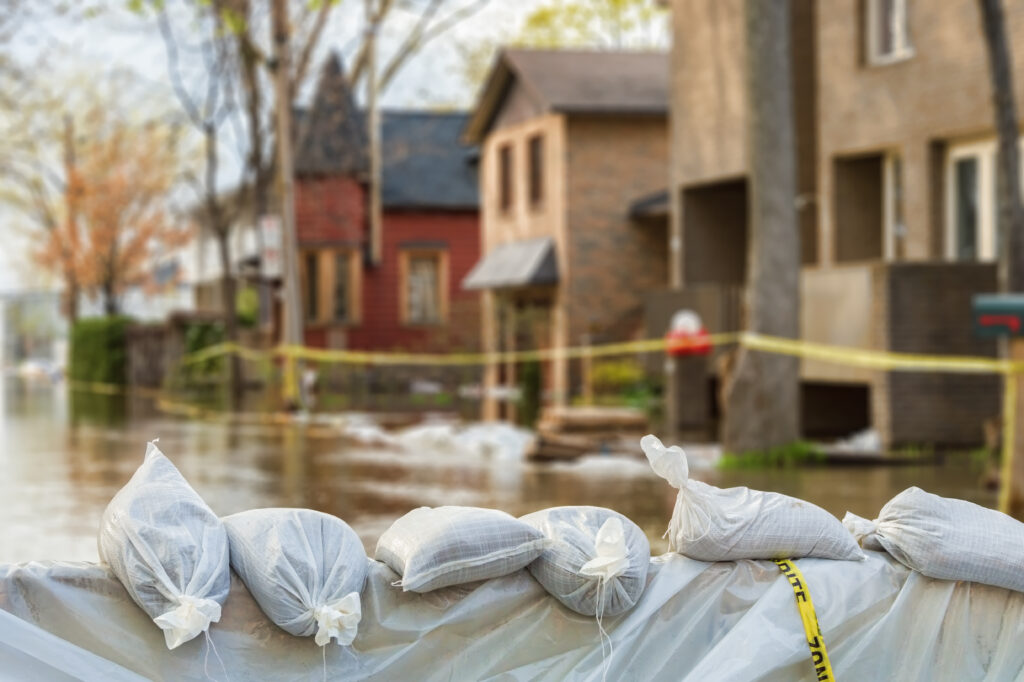When you begin looking for a homeowners insurance provider, the first step is choosing a policy form. These forms begin with HO-1 and end in HO-8 and are meant for specific ownership situations, such as condos and mobile homes. Each one has unique protections that could be the difference between paying for a disaster out of pocket or not.
In this article, we’ll tell you about each type of homeowners insurance. This includes a breakdown of what makes up a regular home policy. You’ll also learn about the 16 named and sometimes covered perils. Finally, we’ll give you an idea of which form is the best.
Why Your Form of Homeowners Policy Is Important
The form of homeowners policy you choose is a crucial step in buying home insurance. It’ll decide how much protection you’ll receive. Each type of policy form covers property damage and liability protection. But the amount of coverage you receive will vary based on the form you choose.
There are usually 16 named perils that insurers cover your house from. Depending on the form you opt for, you might not receive coverage from all 16. This means that a disaster could strike your home and leave you needing to pay for everything yourself. Choosing the right policy form for your situation will prevent this from happening.
Some homeowners insurance forms are for select sorts of people. For instance, there are forms for condos, mobile homes, and house tenants. People in these categories would need to choose the form that works for them, rather than one for a standard dwelling.
What a Homeowners Insurance Policy Includes
All homeowners policies offer a similar amount of coverage. Here’s what you can expect a standard home insurance policy to cover:
- Dwelling coverage. This protects the physical structure of your home from any damages that your policy covers.
- Liability protection. Covers damages that you or your family members cause to other people’s property. This also includes pets.
- Personal belongings coverage. Covers any of your personal belongings that you lose in a disaster.
- Additional living expenses. Pays for your living expenses if a covered peril makes your home uninhabitable. This includes expenses like hotels and food. Note that this only covers costs that go above your usual living expenses.
Depending on the policy form you choose, you might not receive each type of coverage. You’ll need to pay close attention to each form’s benefits. This way you’ll receive the coverage that’s right for you.
The 16 Named Perils in Insurance
Your homeowners insurance protects you from a variety of dangers and threats that could damage your home. There are typically16 named perils that insurers will cover. But the form of policy you choose will affect how many of these threats are covered.
Here are the 16 named perils that a homeowners policy covers, per the Insurance Information Institute (III):
- Fire or lightning strikes
- Wind or hailstorms
- Explosions
- Riots or civil disturbances
- Damage that a vehicle causes
- Damage that planes or other aircraft cause
- Smoke
- Vandalism
- Theft
- Volcanic eruption
- Falling objects
- Damage from sleet, ice, and snow i.e., weight on roof
- Water damage from a discharge of faulty plumbing, sprinkler systems, appliances, or heat or air conditioning
- A sudden crack, tear, or bulge of a hot water or steam system, air conditioning, or fire-prevention system
- Freezing of heating, plumbing, or any other water system
- Accidental damage due to an artificial electrical current in the house
Note: some of the named perils above relate to failing systems in the house. Homeowners policies don’t cover poor maintenance on your part that leads to damage. Your home insurance policy will only cover events out of your control.
The Eight Different Types of Homeowners Policies
There are eight forms of homeowners coverage. Each one offers slightly different benefits than the others. Some aren’t even for standard homes. Choosing the right one will help you make sure you have the proper amount of protection.
Below is a list of each type of homeowners insurance policy form and details about them:
HO-1: Basic or Limited Coverage
HO-1 is the most basic form of home insurance. It typically covers you from the first 10 perils on the list. It also doesn’t usually include any liability protection for you or your family. This policy form isn’t available in most states.
HO-2: “Broad Form”
HO-2 or a “broad form” policy will cover you from all 16 perils. Broad form is still a bit limited because it may not cover all four classifications of basic coverage. Depending on your insurer, a broad policy may cover liabilities.
HO-3: Special Form (Most Common Choice)
This is the most popular form of homeowners insurance. An HO-3 form will protect you from all perils. The only exceptions are perils that your insurer specifically names as not being part of the policy. HO-3 will also provide all of the basic home coverage types. This includes coverage for:
- The physical structure of the dwelling
- Personal belongings
- Liabilities
- Additional living expenses
HO-4: Renters
An HO-4 form is for tenants. Most people know this as renters insurance, which doesn’t cover a building’s physical structure. It’s meant to protect you if you’re renting a house or other unit. It covers:
- Personal belongings
- Liabilities
- Additional living expenses
HO-5: Comprehensive Form
HO-5 is the most comprehensive homeowners policy form. It’ll protect you from everything HO-3 will and more. You’ll have higher limits with this form. This makes it less likely that you’ll need to pay anything out of pocket. HO-5 also typically gives you the replacement cost for items and property you lose.
This form isn’t always available. You should ask your agent about its availability if you’re interested in extra coverage for your residence.
HO-6: Condos
This form is for condominium or co-op owners. Like renters insurance, it doesn’t cover the physical structure of the building. It’ll only cover what’s inside your condo. Many insurers call this “walls-in” coverage. This includes a condo’s walls, ceiling, and floors. HO-6 also typically covers your personal belongings.
HO-7: Mobile Homes
HO-7 is for people who own a mobile home needing coverage for its physical structure. It’ll also cover your personal belongings inside the house. What you get in HO-7 is similar to an HO-2 form. Be sure to ask your insurer about how exactly this form will cover you.
HO-8: Older Homes
An HO-8 form is for older structures. An older building is generally one that’s 40 years or older. An HO-8 policy will usually pay you the actual cash value for any damages to your house. This means they’ll pay you the replacement cost minus any loss in value.
The Best Type of Home Insurance For You
The best homeowners policy form is the one that best suits your situation. Of course, the one with the most protection is HO-5. But that option can be very expensive and may not be available. Plus, it may not make sense if you own a condominium or mobile home.
The most popular choice is HO-3. This is because it covers you from all 16 perils and includes all of the basic coverages. Forms HO-1 and HO-2 either offer protection from fewer perils or have no liability coverage. This puts you at a higher risk, but they’ll be cheaper.
The policy form that you choose will come down to how much you’re willing to spend. The general idea is to buy as much insurance as you can. Property owners with the most coverage pay the least out of pocket.
Frequently Asked Questions
What is the most common homeowners policy?
HO-3 or “special form coverage” is the most common type of homeowners policy. It covers you from all 16 perils. The only perils that an HO-3 doesn’t cover are those that your insurer specifically excludes. It also includes the four basic home insurance coverage classifications:
- Dwelling coverage
- Personal belongings coverage
- Liability protection
- Additional living expenses
What is broad form home insurance?
Broad form homeowners insurance refers to the HO-2 policy. It’s a limited type of coverage that protects you from all named perils. It typically covers the structure of your house and your belongings. In some cases, liability protection may be part of a broad form policy.
An HO-2 form isn’t the most common type of home insurances policy. HO-3 forms offer the most well-rounded protection for homeowners. But HO-2 forms may be cheaper because they offer less coverage.
What’s the difference between HO-5 and HO-3?
HO-5 and HO-3 are very similar. Both include all four of the basic homeowners types. They also cover the 16 named perils. But HO-5 offers extra coverage. When you have an HO-5 form, your insurance company will pay you the replacement cost for any damages to your belongings or property. You’ll also have higher limits than if you had an HO-3 form. This reduces the likelihood of you needing to pay for any damages with your own money.
What type of water damage is covered by home insurance?
This question is more complicated than it sounds. To answer it correctly, you need to know where the water came from. The source determines whether your homeowners policy covers it at all. If your home experienced damage from water that came from outside the house, you’re out of luck unless you have flood insurance. This is the only coverage that will help you in this situation.
On the other hand, if the moisture came from inside your home, you should be covered by your homeowners policy. The reason is that water damage is one of the 16 named homeowners insurance perils. Even so, you’ll only receive a check from your insurer if you have an HO-2 or HO-3 form. If you recall, form HO-1 only covers the first 10 perils. And unfortunately, this destructive force is not one of them.


